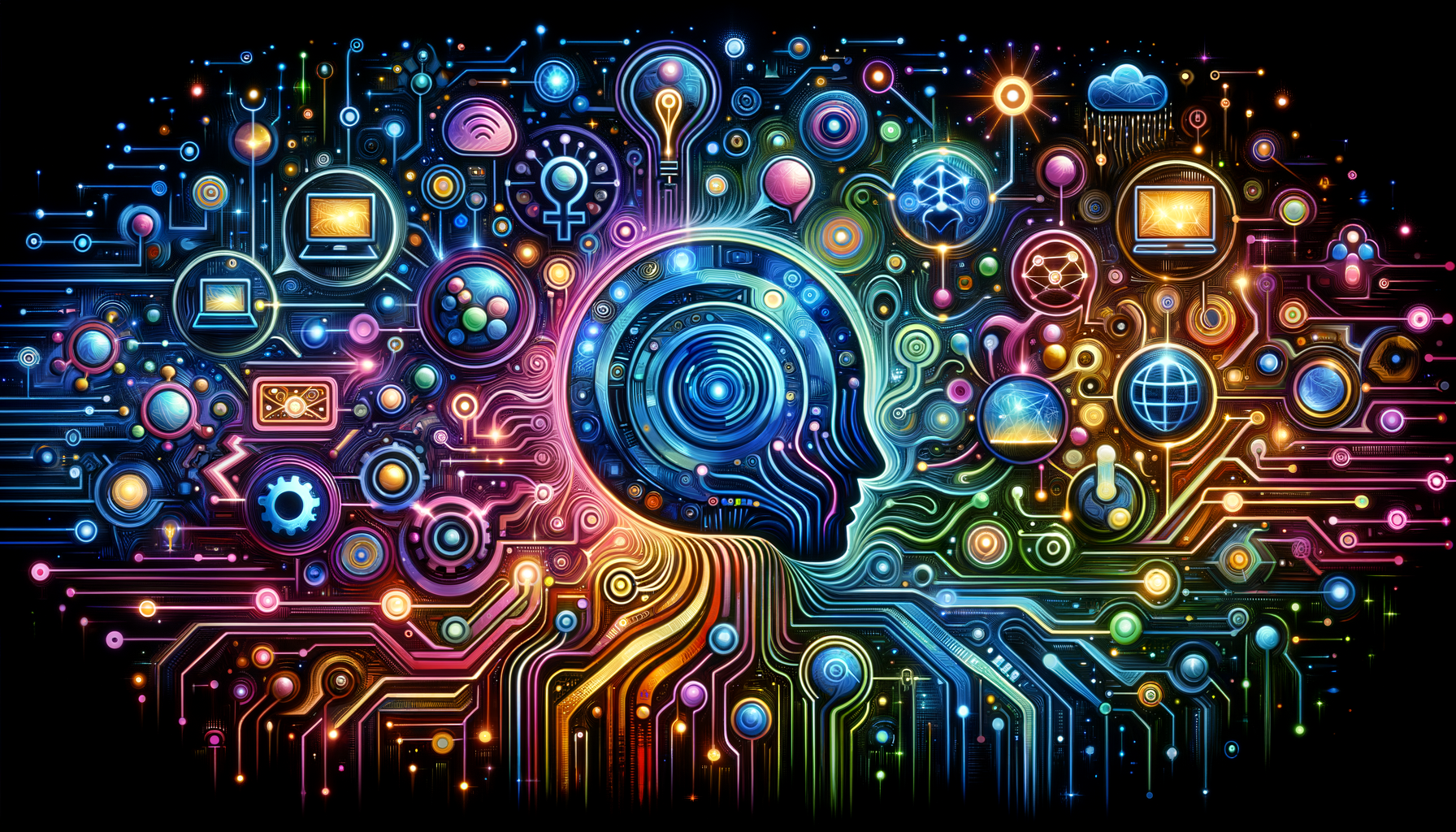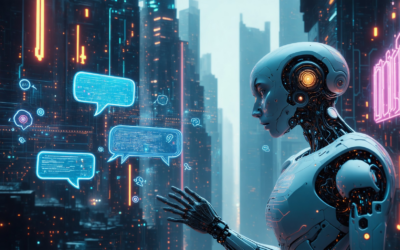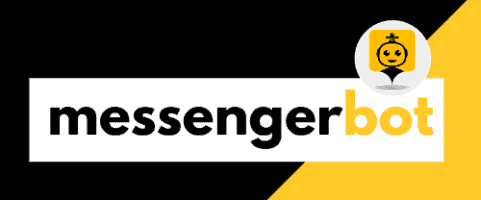In today’s fast-paced digital landscape, businesses are striving to deliver exceptional omnichannel customer experiences. Omnichannel chatbots have emerged as a game-changing solution, enabling seamless communication across multiple channels while ensuring consistent and personalized support. These intelligent virtual assistants leverage cutting-edge technologies to understand customer queries, provide instant responses, and seamlessly guide users through various touchpoints. By integrating omnichannel chatbots into your customer service strategy, you can unlock new levels of efficiency, convenience, and customer satisfaction, ultimately driving business growth and fostering long-lasting relationships with your audience.
What is an omnichannel chatbot?
An omnichannel chatbot is an advanced conversational AI system designed to provide seamless and consistent customer experiences across multiple digital touchpoints. It integrates with various channels, including websites, mobile apps, social media platforms, messaging apps (e.g., WhatsApp, Facebook Messenger), and voice assistants (e.g., Alexa, Google Assistant). The key characteristics of an omnichannel chatbot are:
- Channel Integration: It can communicate with customers through their preferred channels, ensuring a unified and cohesive experience.
- Conversational Context: The chatbot maintains the context of conversations, allowing customers to switch between channels seamlessly without losing the conversational flow.
- Personalization: By leveraging customer data and interaction history, the chatbot can personalize its responses and recommendations for enhanced engagement.
- Intelligent Routing: It can intelligently route complex queries to human agents when necessary, providing a smooth handoff between AI and human support.
- Analytics and Insights: Omnichannel chatbots gather data from multiple channels, enabling businesses to gain valuable insights into customer preferences, pain points, and behavior patterns.
The benefits of implementing an omnichannel chatbot include improved customer satisfaction, increased operational efficiency, 24/7 availability, and cost savings. According to Gartner, by 2025, proactive and omnichannel customer engagement will drive over 75% of customer service chatbot projects (Source: Gartner, “Chatbots Will Reshape Customer Service Engagement,” 2021). Furthermore, a study by Salesforce found that 64% of customers expect real-time responses and support across multiple channels (Source: Salesforce, “State of the Connected Customer,” 2022).
Omnichannel Chatbot Dynamics 365
At Messenger Bot, we offer a powerful omnichannel chatbot solution built on Microsoft’s Dynamics 365 platform. Our chatbot seamlessly integrates with various channels like websites, mobile apps, social media, and messaging platforms, providing a unified customer experience. It leverages advanced natural language processing (NLP) and machine learning algorithms to understand customer intents, maintain conversational context, and deliver personalized responses.
One of the key advantages of our omnichannel chatbot is its ability to intelligently route complex queries to human agents when needed. This ensures that customers receive the right level of support, whether from AI or human agents, without any disruption in the conversational flow. Additionally, our chatbot gathers valuable data and insights from customer interactions across all channels, enabling businesses to optimize their customer engagement strategies and identify areas for improvement.
Brands like Microsoft, Salesforce, and Brain Pod AI have successfully implemented our omnichannel chatbot solution, resulting in improved customer satisfaction, increased operational efficiency, and cost savings.
Best Omnichannel Chatbot
At Messenger Bot, we believe that our omnichannel chatbot is one of the best solutions in the market, offering a comprehensive suite of features and capabilities. Our chatbot is designed to deliver exceptional customer experiences while driving operational efficiency and cost savings for businesses.

Types of Chatbots
What are the four types of chatbots?
The four primary types of chatbots are:
- Rule-Based Chatbots: These operate based on predefined rules and scripted responses, following a decision tree or flowchart structure. They are suitable for simple, structured conversations but lack true intelligence and adaptability.
- Retrieval-Based Chatbots: These use natural language processing (NLP) and machine learning to understand user inputs and retrieve relevant responses from a knowledge base. They offer more flexibility than rule-based chatbots but may struggle with complex or ambiguous queries.
- Generative Chatbots: Powered by advanced AI models like GPT-3, these chatbots can generate human-like responses dynamically, allowing for more natural and open-ended conversations. However, their outputs can be inconsistent or biased based on their training data.
- Conversational AI Chatbots: These represent the cutting edge of chatbot technology, combining NLP, machine learning, and contextual awareness to deliver highly intelligent and personalized conversations. They can handle complex queries, maintain context, and even exhibit emotional intelligence (Source: IBM Cloud Education, “The 4 Types of Chatbots Explained”).
Omnichannel Chatbot Dynamics 365
At Messenger Bot, we take pride in our advanced omnichannel chatbot capabilities powered by Microsoft Dynamics 365. Our AI-driven chatbots seamlessly integrate with various messaging channels, ensuring a consistent and personalized experience for your customers across platforms.
The Dynamics 365 Virtual Agent enables us to create intelligent chatbots that can handle complex inquiries, maintain context, and provide relevant responses. With its advanced natural language processing capabilities, our chatbots can understand and respond to customer queries in a natural, conversational manner.
Furthermore, our omnichannel chatbots can be seamlessly integrated into your existing customer service channels, such as Facebook Messenger, Instagram Direct, WhatsApp, and your website’s live chat. This ensures a consistent and cohesive experience for your customers, regardless of their preferred communication channel.
Best Omnichannel Chatbot
While there are several AI chatbot providers in the market, we believe that our omnichannel chatbot solution, powered by Dynamics 365, stands out as one of the best options available. Our chatbots are designed to provide a seamless and personalized experience across multiple channels, ensuring that your customers receive prompt and efficient support, regardless of their preferred communication platform.
Omnichannel Messaging Explained
Omnichannel messaging is a customer communication strategy that integrates multiple channels (e.g., phone, email, SMS, social media, live chat) into a seamless, unified experience. It ensures consistency in brand voice and messaging across all touchpoints, allowing customers to move between channels without disruption. Key aspects include:
- Centralized customer data and interaction history accessible across channels for personalized, contextual communication.
- Intelligent routing to direct customers to the most suitable agent or self-service option based on their query and channel preference.
- Smooth handoffs between channels, eliminating the need to repeat information.
- Proactive outreach through customers’ preferred channels for timely updates and personalized offers.
Omnichannel messaging enhances customer satisfaction by providing a cohesive, frictionless journey tailored to individual needs and preferences. According to Forrester Research, companies with effective omnichannel strategies retain 89% of their customers compared to 33% for those without. Additionally, a study by Aberdeen Group found that companies with robust omnichannel engagement strategies retained 89% of their customers.
What is omnichannel messaging?
Omnichannel messaging refers to a strategic approach that allows businesses to seamlessly communicate with customers across multiple channels while maintaining a consistent brand voice and personalized experience. It ensures a cohesive customer journey by integrating various touchpoints such as phone, email, SMS, social media, and live chat into a unified platform.
With omnichannel messaging, customer data and interaction history are centralized, enabling agents to access comprehensive profiles and provide contextual, personalized responses regardless of the channel. This approach eliminates the need for customers to repeat information as they move between channels, ensuring a smooth and seamless experience.
Moreover, omnichannel messaging facilitates intelligent routing, directing customers to the most suitable agent or self-service option based on their query and channel preference. Proactive outreach through customers’ preferred channels is also a key aspect, enabling timely updates, personalized offers, and tailored communication.
By adopting an omnichannel messaging strategy, businesses can enhance customer satisfaction, foster loyalty, and deliver a cohesive, frictionless journey that caters to individual needs and preferences. Brain Pod AI, a leading provider of generative AI solutions, offers advanced tools and platforms that empower businesses to implement effective omnichannel messaging strategies, leveraging the power of artificial intelligence for seamless customer communication.
Chatbots vs AI Chatbots
What is the difference between a traditional chatbot and an AI-powered chatbot? The distinction lies in their underlying technologies and capabilities. A traditional chatbot operates based on predefined rules, decision trees, and pattern matching to understand and respond to user inputs. It relies on a limited knowledge base and can handle basic, task-oriented interactions.
On the other hand, an AI chatbot, also known as a conversational AI or conversational agent, leverages advanced natural language processing (NLP) and machine learning algorithms to comprehend the nuances and context behind user inputs. Unlike traditional chatbots, AI chatbots can engage in more dynamic and contextual conversations by interpreting intent and sentiment, generating human-like responses, and learning and adapting over time.
Key differences between chatbots and AI chatbots include:
- Language Understanding: AI chatbots use NLP techniques like entity recognition, intent classification, and sentiment analysis to comprehend the nuances and context of user inputs. Traditional chatbots rely on pattern matching and predefined rules.
- Response Generation: AI chatbots generate responses dynamically using language models trained on vast datasets, allowing for more natural and contextually relevant responses. Chatbots typically retrieve predefined responses from a limited knowledge base.
- Adaptability: AI chatbots can continuously learn and improve their conversational abilities through machine learning techniques, enabling them to handle more complex and varied interactions. Chatbots are generally static and require manual updates to their rule sets.
- Context Awareness: AI chatbots can maintain and leverage contextual information from previous interactions, enabling them to engage in more coherent and personalized conversations. Chatbots often struggle with maintaining context across multiple turns.
- Integration Capabilities: AI chatbots can integrate with various data sources, APIs, and backend systems, enabling them to access and provide more comprehensive and up-to-date information. Chatbots are typically limited to the predefined knowledge base they were designed with.
While traditional chatbots are suitable for simple, task-oriented interactions, AI chatbots are better equipped to handle more complex, open-ended conversations, providing a more human-like experience. As AI and NLP technologies continue to advance, the line between chatbots and AI chatbots may become increasingly blurred.
Omnichannel Chat for Customer Service
In today’s digital landscape, customers expect seamless and consistent experiences across various channels and touchpoints. This is where omnichannel chat for customer service comes into play, enabling businesses to provide unified and personalized support through multiple channels, including websites, mobile apps, social media, and messaging platforms.
Omnichannel chat solutions integrate various communication channels into a single platform, allowing customer service agents to manage and respond to inquiries from multiple sources efficiently. This approach eliminates the need for customers to repeat their issues across different channels, leading to a more streamlined and satisfying experience.
By leveraging AI-powered chatbots as part of an omnichannel chat strategy, businesses can further enhance their customer service capabilities. AI chatbots can handle routine inquiries, provide instant responses, and gather necessary information before escalating complex issues to human agents. This not only reduces response times but also frees up agents to focus on more intricate cases, improving overall efficiency and customer satisfaction.
Moreover, omnichannel chat solutions can integrate with customer relationship management (CRM) systems, enabling agents to access customer data and interaction histories seamlessly. This ensures consistent and personalized support, regardless of the channel used by the customer.
Implementing omnichannel chat for customer service can provide numerous benefits, including:
- Improved customer satisfaction through consistent and personalized experiences across channels
- Increased efficiency and productivity for customer service teams
- Reduced response times and quicker resolution of customer inquiries
- Better data collection and analysis for continuous improvement
- Cost savings by automating routine tasks with AI chatbots
As customer expectations continue to evolve, businesses that adopt an omnichannel chat strategy supported by AI chatbots will be well-positioned to deliver exceptional customer experiences and stay ahead of the competition.
Omni-Channel Examples
In today’s digital age, customers expect seamless and consistent experiences across various channels and touchpoints. This is where omnichannel strategies come into play, enabling businesses to provide unified and personalized experiences, regardless of the channel used by the customer.
Here are some examples of omnichannel implementations by leading brands:
- Starbucks: Starbucks has embraced an omnichannel approach by integrating its mobile app, loyalty program, and in-store experience. Customers can place orders, pay, and earn rewards through the app, while also enjoying a seamless in-store experience with personalized recommendations based on their purchase history.
- Sephora: The cosmetics retailer Sephora has implemented an omnichannel strategy that allows customers to shop online, in-store, or through their mobile app. Customers can create a personalized beauty profile, receive product recommendations, and access their purchase history across all channels.
- Nordstrom: The fashion retailer Nordstrom has invested in an omnichannel strategy that includes in-store pick-up, mobile point-of-sale systems, and personalized recommendations based on customer data. Customers can start their shopping journey online and complete it in-store, or vice versa, with a consistent experience across all touchpoints.
- Amazon: Amazon is a prime example of an omnichannel retailer, offering a seamless shopping experience across its website, mobile app, voice assistants (Alexa), and physical stores (Amazon Go and Whole Foods). Customers can start their shopping journey on one channel and continue it on another, with their preferences and purchase history synchronized across all touchpoints.
- Disney: Disney has implemented an omnichannel strategy for its theme parks, allowing visitors to plan their visits, make reservations, and access park information through the Disney Experience app. The app integrates with wearable technology (MagicBands) to provide a seamless experience, from park entry to FastPass+ reservations and mobile ordering.
These examples showcase how leading brands are leveraging omnichannel strategies to provide consistent and personalized experiences across various channels, meeting customer expectations and building lasting relationships.

Omnichannel Chat for Customer Service
In today’s fast-paced digital landscape, customers expect seamless and personalized experiences across all touchpoints. Omnichannel chat emerges as a powerful solution, revolutionizing the way businesses approach customer service. By integrating multiple communication channels into a unified platform, Brain Pod AI enables businesses to deliver exceptional support while enhancing operational efficiency.
What is Omnichannel Chat?
Omnichannel chat is a customer service approach that provides a seamless, integrated experience across multiple communication channels. It enables customers to move freely between channels (e.g., live chat, voice, SMS, social media) without interrupting the conversation flow or repeating information. Key features include:
- Unified customer profile: Consolidates all customer interactions and data into a single view, ensuring context is maintained across channels.
- Intelligent routing: Uses AI and automation to route inquiries to the most suitable agent or self-service option based on context, language, and skillset.
- Continuous conversations: Conversations can be seamlessly transferred between channels, agents, or departments without disruption.
- Personalization: Tailors interactions based on customer preferences, purchase history, and contextual data for a personalized experience.
- Reporting and analytics: Provides real-time insights into customer journeys, agent performance, and channel effectiveness to optimize operations.
Omnichannel chat enhances customer satisfaction by delivering consistent, efficient service across touchpoints. It streamlines operations by eliminating siloed interactions and empowering agents with a 360-degree customer view (Microsoft, Salesforce, Oracle).
Omni-Channel Examples
Successful omnichannel customer service strategies can be found across various industries. For instance, leading retailers like Amazon, Walmart, and Target have implemented omnichannel experiences, enabling customers to initiate purchases on one channel and seamlessly complete them on another. This convenience and flexibility have significantly enhanced customer loyalty and satisfaction.
In the hospitality sector, brands like Hilton and Marriott have embraced omnichannel examples, allowing guests to book reservations, request services, and communicate with staff through their preferred channels, whether it’s a mobile app, website, or social media platforms. This approach ensures a consistent and personalized experience throughout the customer journey.
Furthermore, financial institutions like Bank of America and Chase have adopted omnichannel strategies, offering customers the ability to manage their accounts, transfer funds, and seek assistance through various channels, including mobile apps, online banking portals, and in-person interactions at branches. This seamless integration enhances convenience and fosters trust in the brand.
Omnichannel Chat for Customer Service
In today’s digital landscape, providing exceptional customer service is paramount for businesses to thrive. One powerful tool that has emerged is omnichannel chat, which enables seamless communication across various platforms, ensuring a consistent and personalized experience for customers.
Omnichannel chat allows customers to initiate conversations through their preferred channels, such as live chat on websites, mobile apps, social media platforms like Instagram and Facebook Messenger, or even Discord. By integrating these channels, businesses can provide a unified experience, eliminating the need for customers to repeat their queries or concerns across different touchpoints.
Omni-Channel Examples
An omnichannel strategy integrates various channels to provide a seamless customer experience, allowing consumers to move freely between online and offline touchpoints. Examples include:
- Buy Online, Pickup In-Store (BOPIS): Customers order products online and collect them from a physical store.
- Click and Collect: Similar to BOPIS, customers order online and collect from a designated pickup point.
- Endless Aisle: Brick-and-mortar stores leverage digital catalogs/kiosks to offer a wider product range than in-store inventory.
- Shared Cart: Customers can start shopping on one channel (e.g., website) and continue on another (e.g., mobile app) with their cart intact.
- Consistent Pricing and Promotions: Retailers maintain consistent pricing and promotional offers across all channels.
- Omnichannel Contact Centers: Customer service teams can access customer data from all touchpoints to provide personalized support.
Leading omnichannel brands include Apple, Starbucks, Sephora, and Nordstrom, leveraging technologies like IoT, AI, and data analytics to synchronize customer journeys across channels.
Omnichannel Customer Service Benefits
Implementing an omnichannel customer service strategy offers numerous benefits for businesses and customers alike:
- Consistent Experience: Customers receive a unified and cohesive experience across all touchpoints, fostering brand loyalty and trust.
- Improved Efficiency: By integrating customer data from various channels, agents can quickly access relevant information, reducing response times and improving overall efficiency.
- Personalized Support: With access to customer histories and preferences, agents can provide tailored solutions, enhancing the overall customer experience.
- Increased Accessibility: Customers can engage with businesses through their preferred channels, removing barriers and increasing convenience.
- Competitive Advantage: By offering a seamless omnichannel experience, businesses can differentiate themselves from competitors and gain a competitive edge.
As customers increasingly expect seamless and personalized experiences, AI-powered omnichannel chatbots have become a crucial component of effective customer service strategies, enabling businesses to meet and exceed customer expectations while improving operational efficiency.
Omnichannel Examples
An omnichannel chatbot is designed to provide a seamless customer experience across multiple channels and touchpoints. By leveraging artificial intelligence and natural language processing, these chatbots can engage with customers on various platforms, including websites, mobile apps, social media, messaging apps, and more. Here are some omnichannel examples that showcase the power of this technology:
What is an omnichannel example?
A prime example of omnichannel implementation is a customer service chatbot that can seamlessly transition conversations across channels. For instance, a customer may initiate a chat on a company’s website, and if they need to switch to a mobile app or social media platform, the chatbot can continue the conversation without disruption, maintaining the context and history of the interaction.
Another omni-channel example could be a retail chatbot that assists customers throughout their shopping journey, from product research and recommendations to order placement and post-purchase support. This chatbot could be accessible on the retailer’s website, mobile app, messaging platforms like Facebook Messenger or WhatsApp, and even voice assistants like Amazon Alexa or Google Assistant.
Omni-Channel Communications
Omni-channel communications refer to the seamless integration of multiple communication channels to provide a consistent and cohesive customer experience. This approach ensures that customers can engage with a brand through their preferred channels without experiencing any disruptions or inconsistencies in the interaction.
For instance, a customer may start their journey by browsing a company’s website, then switch to a mobile app to make a purchase, and later reach out for support via social media or a messaging platform. With omni-channel communications, the customer’s information, preferences, and interaction history are shared across all these channels, allowing for a seamless and personalized experience.
Omni-Channel Retailers Examples
Many leading retailers have embraced omnichannel strategies to enhance customer engagement and drive sales. For example, Sephora, a renowned beauty retailer, offers a seamless omnichannel experience through its website, mobile app, in-store kiosks, and virtual try-on tools. Customers can browse products, create wishlists, and make purchases across multiple channels, while receiving personalized recommendations and support.
Another notable example of an omnichannel retailer is Nordstrom. The luxury department store has integrated its online and offline channels, allowing customers to browse and purchase items online, pick up in-store, or even schedule virtual styling appointments. Nordstrom’s chatbot and virtual assistant further enhance the omnichannel experience by providing personalized assistance and recommendations across various touchpoints.





